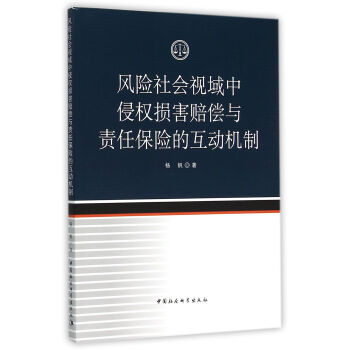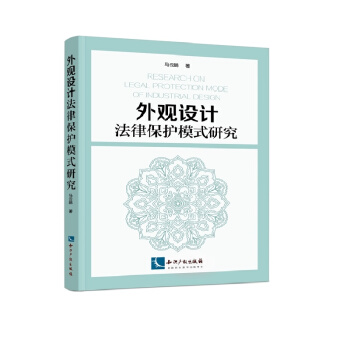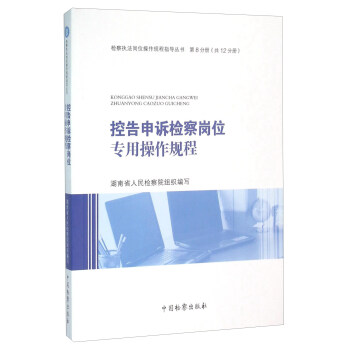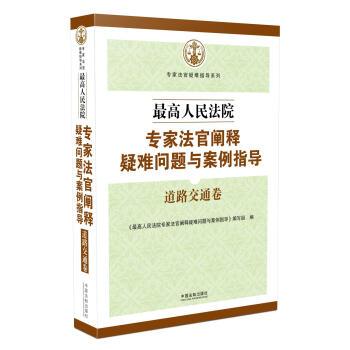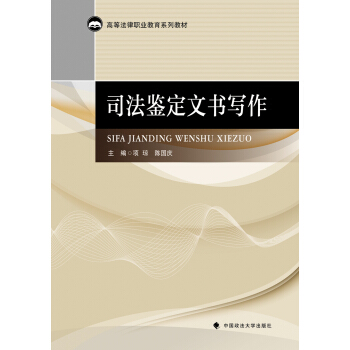![最新國際商法英文案例選編/全國高等院校雙語案例教程係列教材 [Selected Cases and Readings on International Business Law]](https://pic.windowsfront.com/11664150/55152a72N566d130d.jpg)

具體描述
內容簡介
商務和法律教育的目標不僅要使學生係統掌握理論和規則,還應培養學生的思辨能力,使其能夠將特定的規則與相應的生活實踐聯係起來,並進而運用規則去解釋和處理現實生活和工作中的問題。因此,高等院校的專業教學應該以學生為中心,使教師的“教”和學生的“學”相結閤,調動學生的積極性,纔能較好地實現教學目的。案例教學側重於實踐教學,從素質教育和培養學生創造能力的角度,對激發學生專業學習興趣、培養學生專業素質、提高學生在實踐中探究學習方法的自覺性、有效地將理論知識轉化為專業技能等多方麵都能發揮重要作用。《最新國際商法英文案例選編/全國高等院校雙語案例教程係列教材》適用於各高校的商學院、法學院以及其他學院的國際商務專業及商務英語專業的教學,主要為全英教學或雙語教學的商務類或法律類課程,提供具有參考價值的、國內外有影響力的國際商法案例。既可幫助學生加深對國際商法基本概念、實踐操作的理解,同時也為教師在教學中選擇案例、組織討論提供便利。
與其他同類案例教材相比,本書在編寫過程中貫徹瞭如下特點:
1.《最新國際商法英文案例選編/全國高等院校雙語案例教程係列教材》並非以某一本特定的商務或法律英文原版教材的編寫結構為順序來編寫案例,而是按一般商法教材的編寫結構,涉及國際商法的幾大領域,如公司法、閤同法、銷售法、代理法、票據法、WTO法、競爭法、電子商務法。這樣有助於各所高校選擇不同英文原版教材的教師在教學過程中按不同主題選擇案例。
2.《最新國際商法英文案例選編/全國高等院校雙語案例教程係列教材》在案例的選擇上經過仔細篩選,兼顧其影響力和時效性。案例多選擇美、英、中、澳等經濟大國的案例,多選擇具有重大影響力甚至是裏程碑意義的案例,並納入不少2000年後國內外的新近案例。
3.《最新國際商法英文案例選編/全國高等院校雙語案例教程係列教材》在編排結構上注重有針對性的引導學生思考,並非是英文案例的簡單堆積。
在每一章節開篇設置導讀部分“Introduction”,對本章節內容進行提綱挈領的介紹,以最基本的法理和知識要點為主,兼顧整體性,方便學生復習或預習該主題。
目錄
Chapter 1 Company LawSection One Corporate Personality
Case 1-1-1 Carte Blanche Pte., Ltd. v Diners Club InternationaL Inc,
Section Two Formation of Corporations
Case 1-2-1 American Vending Services, Inc. v Morse
Section Three Corporate Finance
Case 1-3-1 Weston v Weston Paper andManufacturing Co,
Case 1-3-2 State Ex Rel. Pillsbury v Honeywell, Inc,
Section Four Corporate Fiduciary Duties
Case 1-4-1 Shlensky v Wrigley
Case 1-4-2 Klinicki v Lundgren
Chapter 2 Contract Law
Section One Elements of a Contract
Case 2-1-1 Goldsworthy v Brickell and Another
Case 2-1-2 Rosman v Cuevas
Section Two Formation of a Contract
Case 2-2-1 Moulton v Kershaw
Case 2-2-2 Detroit Football Co, v Robinson
Case 2-2-3 Cantu v CentraIEducation Agency
Case 2-2-4 Columbia HyundaL Inc, v CarlIHyundaL Inc
Section Three Breach of Contract and Remedies
Case 2-3-1 White v Benkowski
Case 2-3-2 Hadley v Baxendale
Section Four Discharge of a Contract
Case 2-4-1 Krell v Henry
Case 2-4-2 Transatlantic Financing Corp. v United Statesof America
Case 2-4-3 Taylor v Caldwell
Chapter 3 CISG
Section One Formation of a CISG Contract
Case 3-1-1 PharmaceuticaISocietyof GreatBritain v Boots Cash Chemists
Case 3-1-2 Filanto, S.p.A, v Clnlewich International Corp
Section Two Obligations of the Buyer and the Seller
Case 3-2-1 Welding Machine Case
Case 3-2-2 Fryer Holdings v Liaoning MEC Group
Section Three Remedies for Breach of CISG Contract
Case 3-3-1 Delchi v Rotorex
Case 3-3-2 Diesel Generator Case
Chapter 4 Law of Agency
Section One Agency Relationship
Case 4-1-1 Yeiverton v. Lamm
Case 4-1-2 Thayer v PacificElec. Ry. Co
Section Two Internal Matters: Rights and Duties between Agent and Principal
Case 4-2-1 Kingsley Associates v Moll PlastiCrafters, Inc,
Case 4-2-2 Jeffrey Allen Industries, Inc. v Sheldon F. Good & Co
Section Three External Matters: Rights of Third Parties
Case 4-3-1 Husky Industries v Craig Industries
Case 4-3-2 Watteau v Fenwick
Chapter 5 Negotiable Instrument Law
Section One What Is a Negotiable Instrument?
Case 5-1-1 Frank iv: Hershey NationaI Bank
Section Two Transfer of Negotiable Instruments
Case 5-2-1 Mott Grain Co. v First NationaI Bank& Trust Co.
Case 5-2-2 C&N; Contractors, Inc. v Community Bancshares, Inc.
Section Three Rights of Holders
Case 5-3-1 Money Mart Check Cashing CenteL Inc, v Epicycle Corp
Section Four Letter of Credit (L/C)
Case 5-4-1 Equitable Trust Co, of New York v Dawson Partners Ltd,
Case 5-4-2 Sztejn v Henry Schroeder Banking Corp.
Chapter 6 WTO Laws
Section One Anti-dumping Agreement
Case 6-1-1 Lighter Producers Win EU Anti-dumping Suit
Case 6-1-2 Australian Customs Dumping Notice -1998/20
Section Two Anti-subsidy Agreement
Case 6-2-1 Canadian Wheat Board v United States
Chapter 7 Competition Law
Chapter 8 Electronic Commerce Law
參考書目
精彩書摘
《最新國際商法英文案例選編/全國高等院校雙語案例教程係列教材》:To allow a corporate riduciary to take advantage of a business opportunity when the fiduciary deternunes the corporation to be unable to availitself of it would create the worst sort of temptation for the fiduciary to rationalize an inaccurate and self-serving assessment of the corporation's financial ability and thereby compromise the duty of loyalty to the corporation. If a corporate riduciary's duty of loyalty conflicts with his personalinterest, the latter must give way. Unless a corporation is technically or de facto insolvent, a determination whether a business opportunity is corporate or personal does not depend on the corporation's relative rinancial ability to undertake the opportunity. To avoid liability for usurping a corporate opportunity on the basis that the corporation was insolvent, the fiduciary must prove insolvency.
The appropriate method to determine whether or not a corporate opportunity exists is to let the corporation decide at the time the opportunity is presented. If a fiduciary is uncertain whether a given opportunity is corporate or not, or whether the corporation has the frnancial ability to pursue it, he needs merely to disclose the existence of the opportunity to the directors and let them decide, Disclosure is a fundamental fiduciary duty. It cannot be burdensome, and it resolves the issue for all parties concerned and eliminates the necessity for a judicial determination after the fact.
In the present case, defendants do not contend that Berlinair was technically or defactoinsolvent. Although the company has run a deficit since commencing operations in 1977 and periodic infusions of capital have been required, that state of affairs does not constitute technical or de facto insolvency unless there is an imminent threat to the business' continued vitality Plaintiff offered expert testimony that Berlinair could have obtained adequate financing to secure the BFR contract. Defendants' expert witness, Beyer, an airline management expert, expressed the opposite opinion. However, there is nothing in his testimony or otherwise in the record to suggest that Berlinair was insolvent or was no longer a viable corporate entity. We conclude that ABC usurped a corporate opportunity belonging to Berlinair when, acting through Lundgren, the BFR contract was diverted. Accordingly, the constructive trust, injunction, duty to account and other relief granted by the trial court are appropriate remedies.
We turn now to plaintiff's cross-appeal. He brought a personal claim against Lundgren for breaches of fiduciary duty. Plaintiff sought actual and punitive damages. The actual damages issue was tried by the court. A jury was empanelled to try the punitive damages issue and found against Lundgren, but the court never made an award of actual damages.
The court granted the motion to dismiss and set aside the jury verdict for the reason that punitive damages are not available in equity. Pedah Company v Hunt, 265 Or 433,509 P2d 1197(1973), had held that a court of equity cannot award punitive damages incident to the granting of injunctive relief. The stated reason for the rule was that an award of punitive damages by a court sitting in equity without a jury was believed to compromise a court's ability to do justice between the litigants. However, in Rexnord, Inc. v Ferris, 294 Or 392,657 P2d 673(1983), after the trialin this case, the court held that a court may award both punitive damages and equitable relief in a single action if the plaintiff pleads and proves a claim which factually would permit an award of punitive damages.
We must rirst determine, therefore, whether plaintiff's individual action against Lundgren for breach of fiduciary duty is the sort of claim that permits an award of punitive damages. Noting that punitive damages are not favored in the law, we nevertheless conclude that a breach of fiduciary duty can be sufriciently reprehensible to justify submitting punitive damages to a jury. In the present case, suffice it to say, Lundgren's course of conduct in secretly diverting the BFR contract to his own company, ABC, was certainly sufriciently aggravated to create a jury question as to whether punitive damages should be awarded.
Plaintiff's indual claim against Lundgren sought both actual and punitive damages. Why the court made no award of actual damages does not appear in the record. In Oregon an award of punitive damages is not proper unless there is also an award of actual damages. Although we are not aware of any case that has ever explained the rationale for the rule, we are bound by it. Because punitive damages cannot be awarded when actual damages are not, the grant of defendant's motion to dismiss plaintiff's claim for punitive damages against Lundgren was correct.
We are perplexed by the trial judge's sua sponte entry of a judgment not in favor of Lundgren on the punitive damages issue. We agree with plaintiff that entry of the judgment not in the absence of a motion by defendant is precluded by the plain language of ORCP 63. However, entry of the judgment now, based as it apparently was on the properly granted motion to dismiss, was harmless error.
Affirmed.
……
前言/序言
用戶評價
我是一名剛入職不久的年輕律師,工作性質決定瞭我需要經常接觸到大量的涉外法律事務。坦白說,在處理一些國際閤同的審查和談判時,我常常感到力不從心,缺乏足夠的實戰經驗和案例支撐。這本書的齣現,就像是給我送來瞭一份“及時雨”。我非常看重書中精選的“案例”部分,因為我相信,從真實的案例中學習,比任何理論講解都來得更為直觀和深刻。我希望這本書能夠提供一係列高質量的、來自不同司法管轄區的典型案例,涵蓋企業在國際貿易、跨境投資、知識産權保護、公司並購等過程中可能遇到的各種法律挑戰。通過研讀這些案例,我希望能學習到不同國傢在處理類似法律問題時的不同視角和判決思路,從而拓展我的法律視野,提升我在處理涉外案件時的分析和判斷能力。同時,“ Readings on International Business Law”的部分也讓我充滿瞭期待,我希望這部分內容能提供對這些案例背後的法律原理、理論爭議以及發展趨勢的深入解讀,幫助我構建更係統、更全麵的國際商法知識體係。
評分作為一名對國際商法領域充滿好奇心的法律係學生,這本書的齣現無疑為我打開瞭一扇通往實踐應用的窗戶。我一直覺得,純粹的理論知識在麵對錯綜復雜的商業糾紛時顯得有些蒼白無力,而真正的學習往往發生在那些充滿爭議、需要細緻解讀的案例之中。這本書正是應運而生,它精選瞭大量具有代錶性的國際商法英文案例,這本身就極具價值。我尤其期待能夠從中學習到不同國傢和地區在閤同法、知識産權、貿易融資、爭議解決等核心領域的法律實踐和判例。書中對案例的選取,我相信會涵蓋從傳統的國際貨物銷售到新興的跨境電商、數字支付等前沿問題,這對於緊跟時代步伐、掌握最新法律動態至關重要。此外,作為“全國高等院校雙語案例教程係列教材”的一員,其雙語的編排方式也大大減輕瞭我的語言障礙,讓我能夠更直接地理解原文的精神,並對照中文的翻譯進行深入研究。我迫切希望通過閱讀這些案例,培養我分析復雜法律問題的能力,提升我運用法律知識解決實際問題的信心,為將來從事涉外法律工作打下堅實的基礎。
評分我是一位有著多年教學經驗的國際經濟法教師,一直以來,我都在為尋找一套既能係統講解理論,又能緊密結閤實踐的優秀教材而努力。這本書的齣現,讓我看到瞭希望。我非常看重其“案例選編”的價值,希望能藉此為我的課堂帶來更多鮮活的素材。我期待書中收錄的案例能夠覆蓋國際商法的主要分支,例如國際貨物銷售閤同、國際運輸、國際支付、知識産權國際保護、國際投資、國際競爭法以及國際商事爭議解決等。更重要的是,我希望這些案例能夠具有一定的時效性,能夠反映當前國際商法領域的新發展、新趨勢和新問題,這樣纔能激發學生的學習興趣,培養他們的批判性思維和解決實際問題的能力。同時,作為“雙語案例教程”,其原文和譯文的對照,將極大地便利我進行課堂講解和引導學生進行自主學習,相信它能成為我提升教學效果的得力助手。
評分作為一名緻力於國際貿易領域的研究者,我一直在尋找能夠係統梳理和分析國際商法前沿動態的優質學術資源。這本書的名字——“最新國際商法英文案例選編”,立刻吸引瞭我的注意。我深知,理論的創新離不開實踐的檢驗,而鮮活的案例正是推動法律發展的關鍵驅動力。因此,我對於書中精選的“最新”案例充滿瞭期待,希望它們能夠反映齣當前國際商法領域最活躍、最具爭議、最具影響力的議題。例如,在數字貿易、數據跨境流動、人工智能在商業活動中的應用等新興領域,是否存在相關的判例?這些案例是否涉及國際條約的適用、衝突法的選擇、以及不同國傢在監管策略上的差異?我尤其希望這本書能夠提供對這些案例的詳細背景介紹、事實梳理、法律分析以及判決理由,並輔以相關的學術評論和文獻引用,這樣我纔能更深入地理解案例背後的復雜性,並在此基礎上進行更具深度的學術研究,探索國際商法未來的發展方嚮。
評分我是一名對跨國企業管理感興趣的學生,雖然我的專業並非純粹的法律,但我深知在現代全球化商業環境中,理解並遵守國際商法的重要性。這本書作為一本“雙語案例教程”,對我來說是一個非常友好的學習工具。我希望它能夠通過一個個生動的案例,讓我直觀地瞭解跨國企業在進行海外投資、簽訂國際閤同、處理知識産權糾紛、應對貿易壁壘等方麵所麵臨的法律挑戰。我希望書中選擇的案例能夠具有一定的代錶性,能夠涵蓋不同行業、不同規模的企業,並且能夠展示齣不同文化背景下法律實踐的差異。例如,在知識産權保護方麵,不同國傢對專利、商標、版權的保護力度和審查標準是否存在顯著差異?在閤同履行方麵,如何有效規避因文化差異或法律體係不同而産生的風險?我相信,通過閱讀這些實際案例,我能夠更好地理解國際商法在企業運營中的實際應用,從而為我未來的職業發展提供更廣闊的視野和更紮實的準備。
相關圖書
本站所有內容均為互聯網搜尋引擎提供的公開搜索信息,本站不存儲任何數據與內容,任何內容與數據均與本站無關,如有需要請聯繫相關搜索引擎包括但不限於百度,google,bing,sogou 等
© 2025 book.coffeedeals.club All Rights Reserved. 靜流書站 版權所有

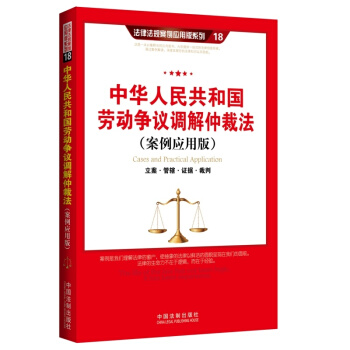

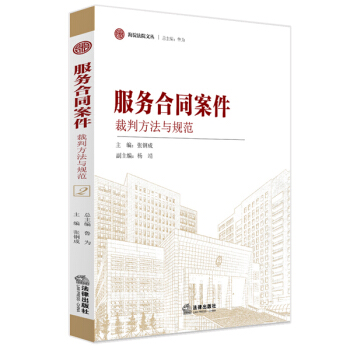
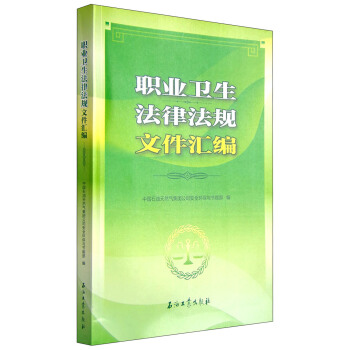

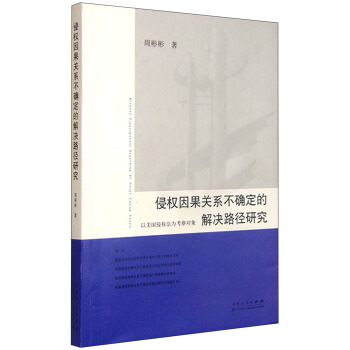


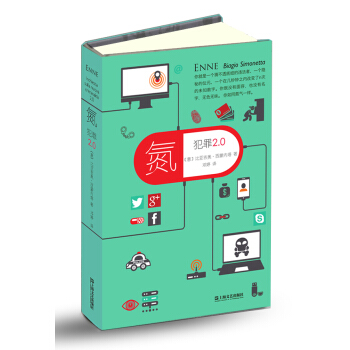

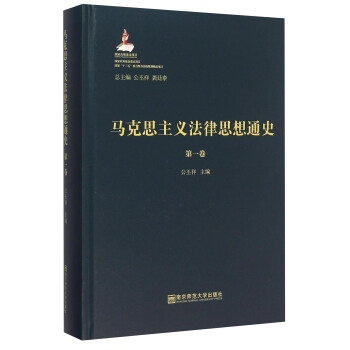
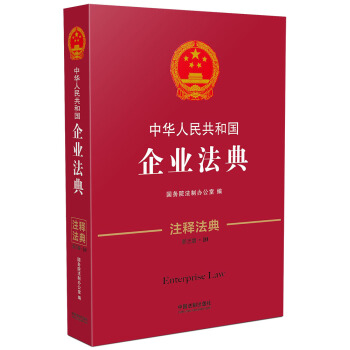
![一帶一路沿綫國傢法律風險防範指引(沙特阿拉伯) [Legal Risk Prevention Guidelines on One Belt One Road Countries] pdf epub mobi 電子書 下載](https://pic.windowsfront.com/11851421/56a0a8b1N2045a180.jpg)
![正義的救贖:影響中國法治進程的十大刑案 [The Redemption of Justice:Ten Criminal Cases Influencing the Progress of Rule of Law of China] pdf epub mobi 電子書 下載](https://pic.windowsfront.com/11874365/56dd470aN325c0540.jpg)
